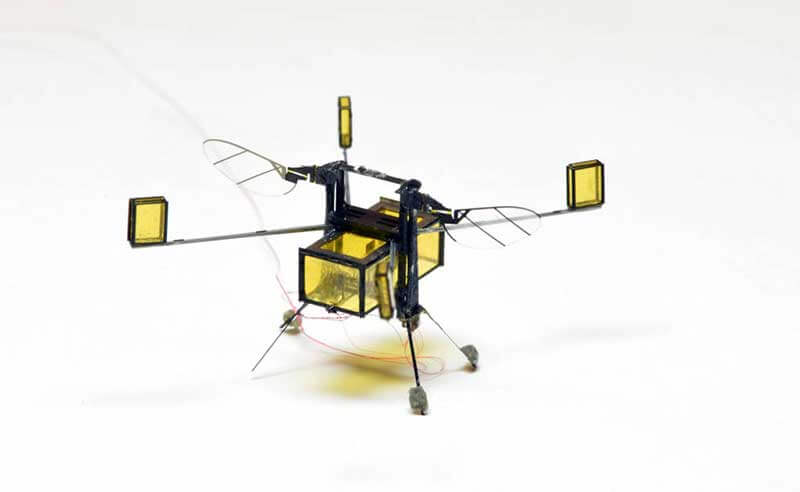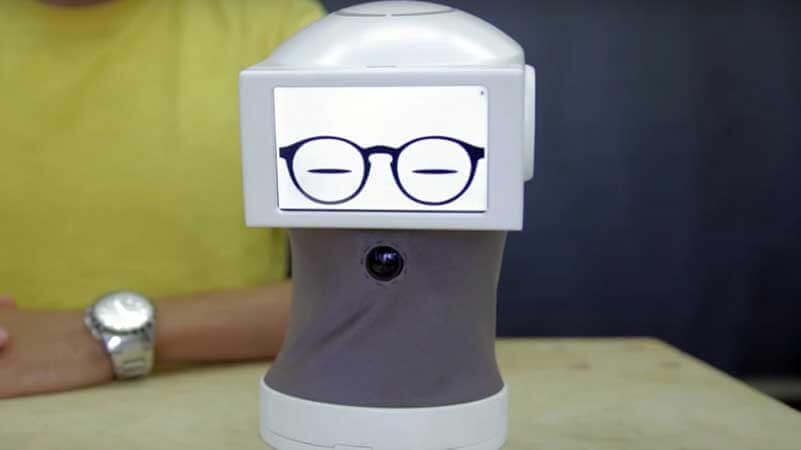- Salto-1P: the tiny jumping robot that’s a leap ahead of the rest
- Hexa’s creepy open source hardware is a step forward in robotics
- The RoboBee swims and flies its way into the future
- Peeqo is a soft, sassy Alexa that’s pop-culture savvy
Robotics have become so common that we don’t give them a lot of thought. From automated pickers, to Amazon’s warehouse bots, to automated drones, you probably think there’s little left to surprise or amuse you. But recent innovations are opening new possibilities for automation, and with advances in locomotion and communication, these next-gen bots are giving us a sneak peek into the future.
Salto-1P: the tiny jumping robot that’s a leap ahead of the rest
As easy as it is for us, walking on two legs is actually a stunning feat. What we take for granted requires balance, split-second calculations, and a complex system of joints and muscles. Roboticists know that bipedal robots are sometimes necessary – for instance, in factories or power plants designed for people. But for rough terrain, they’re experimenting with more unconventional options.
Salto-1P is a a tiny jumping robot from the University of California, Berkeley. It uses a single powerful leg to leap into the air, and it’s agile enough to make a second jump from a wall or horizontal surface. “Think hyper-aggressive pogo-stick,” Duncan Haldane, a robotics researcher on the team that designed Salto-1P, told IEEE Spectrum. “Jumpers are good in terrain where good spots to put a hand or foot are small and far apart. Also good if you want a small robot to be able to hop up onto a table, up stairs, or simply move around in a human-scale environment.” As Matt Simon, a science reporter for Wired, writes, “It’s doing parkour… Which means that as Haldane perfects the controls, one day he’ll get the robot to string together many more jumps and better avoid obstacles to travel significant distances.”
Hexa’s creepy open source hardware is a step forward in robotics
In contrast to Salto-1P’s designers, Andy Xu thinks more is better. In place of one leaping leg, Xu’s Hexa sports six spider-like appendages, each moving independently to conquer obstacles in its path. It’s unsurprising – once you’ve taken a look at this little guy – that Xu says “Hexa’s mobility is modeled after insects.” As it walks across the floor, more arachnid than beetle, Matt Simon describes it as “scuttling into the uncanny valley”. Not cute, exactly, it’s creepily similar to things that you might feel running across your arm at night.
But Hexa is surprisingly people-friendly. Robotics has been held back, relative to software development for instance, because you really need an expensive lab to work on hardware. But Xu has a vision for the future – what you might call open source robotics. His company, Vincross, knows that the tiny robot has limited uses now – but they want customers to teach it to do new things. Essentially, they’re crowdsourcing Hexa’s applications, encouraging people at home to experiment with it. They’ve also opened its operating system, Mind OS, to researchers in a human mentor program.
The RoboBee swims and flies its way into the future
The world of robotics is evolving, as are the range of tasks robots are expected to do. The problem is that most designs aren’t very adaptable. They’re purpose-built for a single, repetitive task and a static environment. But if you want robots to work in the real world, beyond the confines of laboratories and factories, researchers need to get creative.
That’s exactly what happened at Harvard. A team of scientists from the Wyss Institute for Biologically Inspired Engineering at Harvard University and the Harvard John A. Paulson School of Engineering and Applied Sciences (SEAS), have been developing robotic ‘bees’ for some time. But they wanted to take their creations a step further, increasing their versatility in actual environments. Their latest design is a tiny insectoid that can swim by flapping dragonfly-like wings. As it rises to the surface, it uses the surface tension of the water to buoy it, and a micro-factory on board starts to convert water into hydrogen and oxygen. Finally, in just a few seconds, it ignites the hydrogen, blasting itself clear of the water and taking flight.

As Elizabeth Farrell Helbling, a graduate student in the Microrobotics Lab and co-designer, explains, “Because the RoboBee has a limited payload capacity, it cannot carry its own fuel, so we had to come up with a creative solution to exploit resources from the environment. Surface tension is something that we have to overcome to get out of the water, but is also a tool that we can utilise during the gas collection process.” What might seem like a cute toy may actually help in search and rescue missions, where this microbot’s abilities may well save lives.
Peeqo is a soft, sassy Alexa that’s pop-culture savvy
But not everything new and cool in robotics is about locomotion. Enter Peeqo, a savvy rival in the smart speaker market. The big three, Amazon, Google, and Apple, offer talking speakers that can answer simple queries, play music, and perform a range of other tasks. But Peeqo’s different – more alive, more like a clever friend than a silicone and plastic device.
Abhishek Singh, Peeqo’s designer, is dissatisfied with that lack of personality. “One of the reasons I wanted to build this bot was because I feel a lot of the conversation on social robotics today centers around their inability to express emotion or to be relatable,” he told TechCrunch. So he designed this lovable robot with a bit of motion, an animated face, and the capacity to communicate with GIFs. As he said, “I love GIFs as much as every other person and they’ve become a universal language of sorts on the internet and beyond, capable of depicting almost anything from emotion to information. Often a GIF just says it better.”

Peeqo blinks its eyes, wiggles, and uses non-verbal cues to signal that it’s paying attention. But best yet, it has a clever sense of humour and a sophisticated command of pop culture. When Singh asked Peeqo whether or not GIF was pronounced with a “hard-g”, the cheeky bot played a clip from Pulp Fiction in which Samuel Jackson’s character threatened anyone who dared say “jif”!
These robots are changing the future, one advance at a time. And while a scuttling bot that can learn your favourite dance moves or a swimming, flying bee bot may not seem like the best thing since sliced bread, these innocuous improvements take robots a lot further than you might imagine. Soon, we may have companion bots that can navigate stairs, carry trays, and deliver medicine to their owners. And tiny bots may save the lives of people by swimming, flying, and crawling their way to summon help. As the saying goes, “great oaks from little acorns grow”!
Share via:


